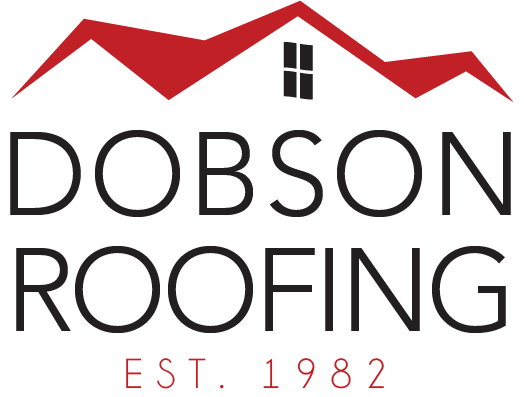Roof repairs can vary in complexity depending on the type of issue you’re facing. Here are some general steps for fixing a roof:
1. Assess the roof repairs that are needed: Determine the nature and extent of the roof damage. Is it a small repair or a more significant issue that requires professional attention?
2. Gather the necessary tools and materials: Depending on the repair needed, you may require items like roofing nails, tiles, roofing cement, a hammer, a utility knife, a pry bar, safety equipment, and a ladder.
3. Small repairs you can do yourself: If you have basic DIY skills and the issue is minor, such as a small leak or a missing/damaged tile or slate, you can attempt to fix it yourself. Replace missing tiles or slates, seal leaks with roofing cement, or patch small holes using appropriate materials. However, always prioritize your safety and consider hiring a professional if you’re unsure.
4. Safety first: When working on a roof, it’s crucial to prioritize safety. Use appropriate safety equipment, work on a stable surface, secure ladders, and avoid working in adverse weather conditions.
5. Know your limits: While some roof repairs can be DIY projects, larger or more complex issues are best handled by professional roofers. If you’re unsure about the repair or lack experience working on roofs, it’s wise to call a professional.
 As for when to call a roofer or just DIY, consider the following situations:
As for when to call a roofer or just DIY, consider the following situations:
1. Extensive damage: If your roof has significant damage, such as multiple missing shingles, large leaks, sagging areas, or structural issues, it’s best to call a roofer. They have the expertise to assess the damage accurately and provide the necessary repairs.
2. Safety concerns: If the repair involves working at heights, steep angles, or requires specialized equipment, it’s safer to hire a professional roofer. They are trained to handle such situations and have the necessary safety measures in place.
3. Warranty considerations: If your roof is still under warranty, attempting repairs yourself or hiring an unqualified individual may void the warranty. Check the terms of your warranty and consult a professional roofer who can work within the warranty guidelines.
4. Time and convenience: If you lack the time, experience, or confidence to tackle a roof repair yourself, it’s more convenient to call a roofer. They will have the necessary skills, equipment, and knowledge to complete the job efficiently.
In summary, small roof repairs can sometimes be done by homeowners with basic DIY skills. However, for significant damage, safety concerns, warranty considerations, or when you lack the necessary expertise, it’s best to call a professional roofer. They can assess the situation, provide accurate repairs, and ensure the job is done correctly and safely.
Does it matter if my roof repairs are on a pitched or flat roof?
The general steps provided for fixing a roof can be applied to both flat roofs and pitched roofs, but there are some differences in terms of repair techniques and considerations. Here’s a breakdown for each type:
Flat Roofs:
1. Assess the problem: Determine the nature and extent of the damage, such as leaks, cracks, or ponding water.
2. Gather the necessary tools and materials: This may include roofing membrane, adhesive, roofing cement, a utility knife, a trowel, a pry bar, safety equipment, and a ladder.
3. Small repairs you can do yourself: Minor repairs like sealing small leaks with roofing cement or patching cracks can often be done by homeowners with basic DIY skills.
4. Safety first: Flat roofs can be slippery, so ensure you have proper safety equipment and take necessary precautions to prevent falls.
5. Consider hiring a roofer: If the damage is extensive, involves structural issues, or requires specialized knowledge or equipment, it’s best to call a professional roofer with experience in working with flat roofs.
Pitched Roofs:
1. Assess the problem: Identify issues such as damaged or missing shingles, leaks, or damaged flashing.
2. Gather the necessary tools and materials: This may include replacement shingles, roofing nails, a hammer, a pry bar, a utility knife, safety equipment, and a ladder.
3. Small repairs you can do yourself: Homeowners with DIY skills can often replace individual shingles, secure loose ones, or apply roofing cement to seal minor leaks.
4. Safety first: Pitched roofs can be steep, so take extra precautions to ensure your safety. Use appropriate safety equipment, secure ladders, and work on a stable surface.
5. Consider hiring a roofer: If the damage is extensive, covers a large area, or requires more complex repairs like replacing underlayment or addressing structural issues, it’s advisable to call a professional roofer.
Remember, these guidelines are general, and the complexity of repairs can vary. If you’re unsure or uncomfortable with any aspect of the roof repair process, it’s always best to consult a professional roofer who can assess the situation accurately and provide appropriate solutions.
Finding a reliable roofer in the UK requires some research and due diligence. Here at Dobson Roofing we have over 40 Years of quality roofing experience but don’s just take our word for it. Our reputation is second to none so we’d suggest the following:
1. Seek recommendations: Ask friends, family, neighbours, or colleagues if they have recently had roofing work done and if they can recommend a reliable roofer. Personal recommendations can be valuable since they are based on real experiences.
2. Check online reviews and ratings: Look for reviews and ratings of roofing companies or individual roofers on reputable websites. Read both positive and negative reviews to get a balanced understanding of their reputation.
3. Verify credentials and qualifications: Check if the roofer or roofing company is registered with relevant professional bodies such as the National Federation of Roofing Contractors (NFRC). Membership with these organizations indicates that the roofer has met certain standards and adheres to a code of conduct.
4. Ask for proof of insurance: Ensure that the roofer has appropriate insurance coverage, including public liability insurance. This protects you in case of any accidents or damage that may occur during the roofing work.
5. Request references: Ask the roofer for references from previous customers. Contact those references to inquire about their experience with the roofer, the quality of the work, and their overall satisfaction.
6. Obtain multiple quotes: Obtain detailed written quotes from several roofers for the specific work you require. Compare the quotes to understand the pricing, scope of work, and any variations. Be cautious of significantly low or high quotes compared to others, as they may indicate potential issues.
7. Communication and professionalism: Assess the roofer’s communication skills and professionalism during your interactions. A reliable roofer should be responsive, provide clear explanations, and be willing to address your questions or concerns.
8. Obtain a written contract: Once you’ve selected a roofer, ensure that all the details of the project, including timelines, costs, materials, and warranties, are documented in a written contract. Review the contract carefully before signing and ask for clarification on any unclear points.
If you have any queries, questions or just need some advice then don’t hesitate to give us a call or contact us on the form below.
Contact Us
Address
Dobson Roofing Services Ltd,
109-111 Chesterfield Road, Dronfield, Derbyshire, S18 2XE
Phone
M: 07711770081
